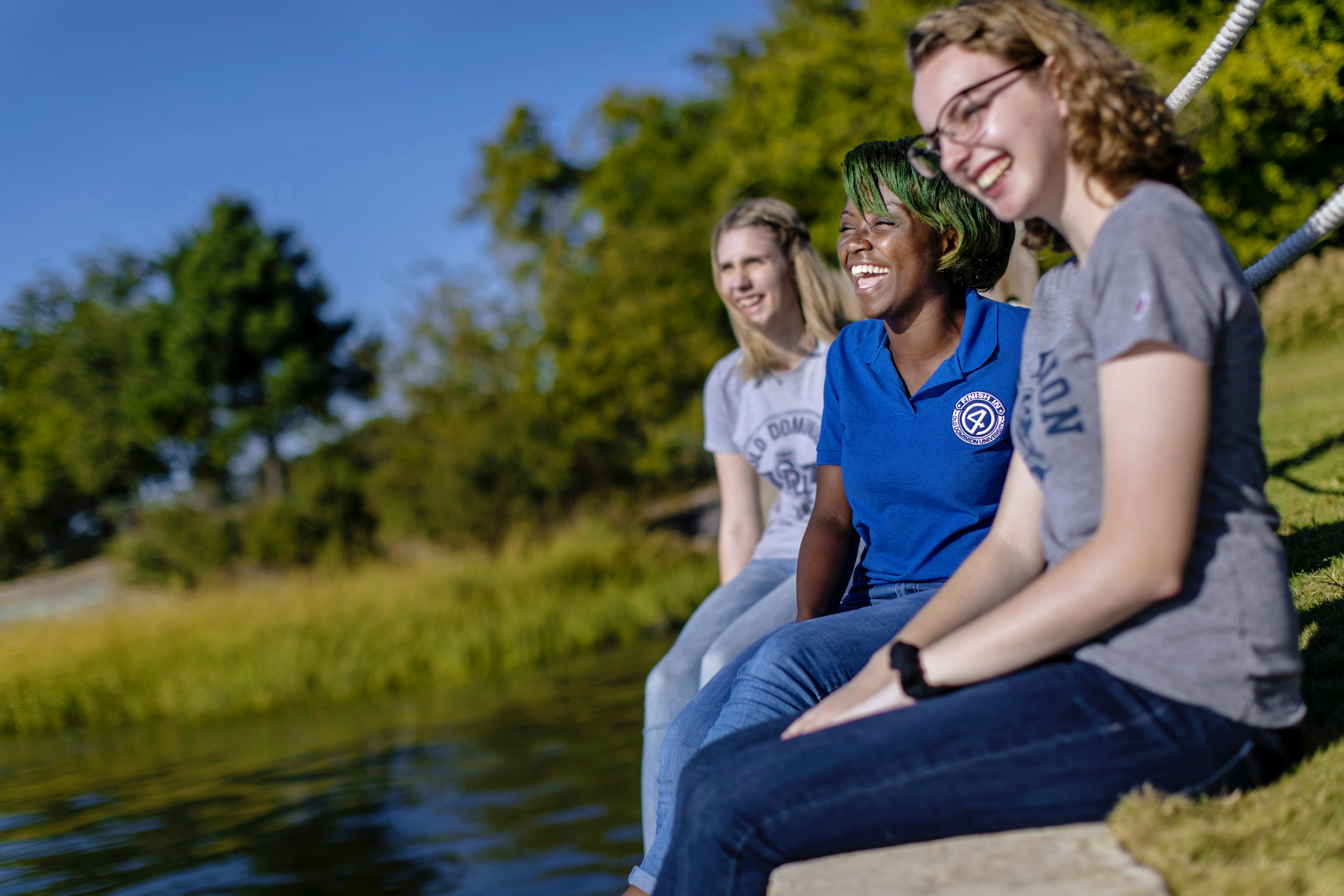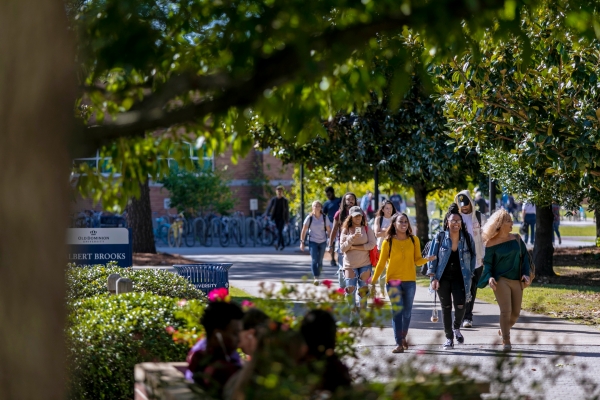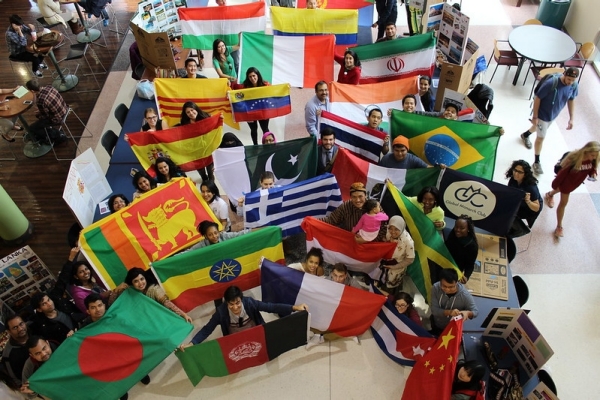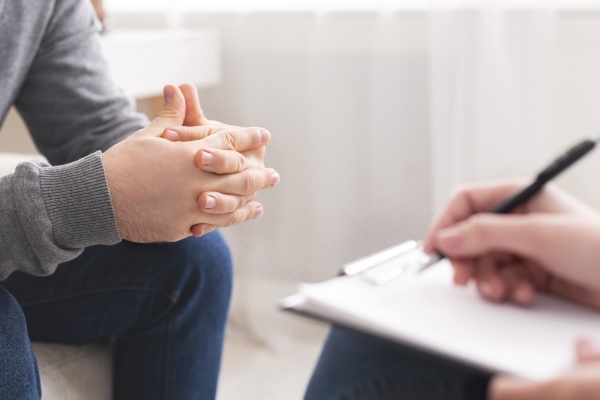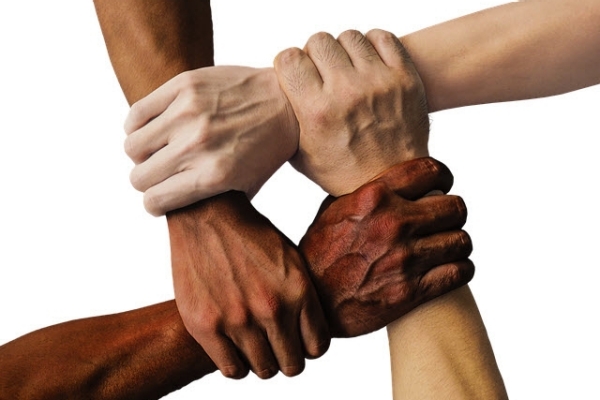Sexual assault, dating violence, and domestic violence can happen to anyone. A 2019 Association of American Universities survey on sexual assault and misconduct polled over 150,000 students at 27 universities. The data revealed 13% of the students had been impacted by some form of nonconsensual sexual assault.
The Women's Center provides resources, advocacy, and services to all students of all genders, gender identities, including men and transgender. We work with survivors of all races, religions, incomes, languages, abilities, ethnicities, and sexual orientations. However, we recognize that there are some communities who have been disproportionately or differently impacted by sexual assault/interpersonal violence and their access to services.
The Women's Center is committed to serving all students by providing accessible, free, culturally competent, and confidential advocacy and services to all survivors and their allies.
Below is a beginning list of communities. This is a not an exhaustive list. Our goals are to continue building connections and to help students understand that everyone deserves support, and the Women's Center is here to help:
Servicing Active Military & Student Veterans
Military sexual trauma (MST) is the term that the Department of Veterans Affairs (VA) uses to refer to sexual assault or repeated threatening sexual harassment that occurred while the veteran was in the military. It includes any sexual activity where someone is involved against their will--they may have been pressured into sexual activities (for example, with threats of negative consequences for refusing to be sexually cooperative or with implied faster promotions or better treatment in exchange for sex), may have been unable to consent to sexual activities (for example, when intoxicated), or may have been physically forced into sexual activities.
The impact of interpersonal violence (stalking, relationship abuse, and sexual violence) effects all people regardless of their identity.
When sexual assault occurs it is devastating to the victim regardless of sex and/or gender. All victims have the same rights under the law, women and men. Survivors of sexual violence often blame themselves for the attack(s). Men, in particular, may feel that they should have been strong enough to defend themselves against the assault. Others may feel that they are at fault if they do not say "No".
Here at ODU, we have a population which includes active military personnel and student veterans that have a unique set of needs and have dealt with a number of things that many civilian students have never had to deal with. The Women's Center recognizes these differences and is committed to serving veterans and military-connected students by providing accessible, free, culturally competent, and confidential advocacy to all survivors and their allies.
Concerns
All survivors that use the Women's Center's services have the right to respectful treatment.
If you have experienced sexual trauma while on active duty or when returning to civilian life the Women's Center can help identify and connect you to the services and offices both on and off campus that can best help you in your unique situation.
Serving International Students
The number of international students in the U.S. has quadrupled to nearly 800,000 since the early 1970s. Similarly, at ODU there has been a significant change in the international student body over the past several years. International students may experience adjustment difficulties due to:
- Language
- Cultural barriers to meaningful interactions with U.S. students
- Lack of support network
- Pressures regarding high academic expectations
- Lack of financial resources
These factors could lead to an increased potential of being victimized. For example, the concept of consent could be exploited when an international student is asked if they would like to watch "Netflix and chill". This is a code word (euphemism) for sex.
Concerns:
- Strong loyalty binds to race, culture, nationality, and family.
- Cultural and/or religious beliefs that restrain the survivor from leaving the abusive relationship or involving outsiders.
- Distrust of law enforcement, the criminal justice system, and social services.
- Lack of service providers that look like the survivor or share common experiences.
- Lack of culturally and linguistically appropriate services.
- Lack of trust based on a history of racism and classism in the United States
- Fear that their experience will reflect on or confirm the stereotypes placed on their nationality.
- Assumptions of providers based on ethnicity or nationality.
- Attitudes and stereotypes about the prevalence of violence and/or how women are treated in their home country.
- Legal status in the U.S. of the survivor and/or the perpetrator.
We recognize that any of these concerns may stop an international student from reaching out for assistance. However, the Women's Center is committed to providing accessible, free, culturally competent, and confidential services to all international students.
Serving LGBTQIA students
The impact of sexual violence including stalking, domestic violence, and relationship abuse affects all people no matter their identity. However, LGBTQIA people have several special considerations when coping with relationship abuse, sexual assault, and stalking. In fact, it is estimated that between 25 and 33 percent of LGBTQIA relationships include abuse, a rate equal to that of heterosexual and cisgender relationships. There is a misconception that if violence occurs in an LGBTQIA relationship it is always mutual fighting and that it does not reflect the same power and control issues as seen in heterosexual relationships.
The Women's Center recognizes these differences and is committed to serving LGBTQIA people by providing accessible, free, culturally competent, and confidential advocacy and direct services to all survivors and their allies. The Women's Center works in collaboration with the Safe Space Committee to work help reduce homophobia, transphobia, and heterosexism in the Old Dominion University community.
Statistics
Intimate partner violence can happen to anyone. According to the 2010 National Intimate Partner and Sexual Violence Survey, "bisexual women experienced significantly higher lifetime prevalence of rape and other sexual violence by an intimate partner when compared to heterosexual women" and "significantly higher lifetime prevalence of rape, physical violence, and/or stalking by an intimate partner when compared to lesbian and heterosexual women."
Some studies indicate that between 20 and 35 percent of LGBTQIA couples experience domestic violence.
According to another study, 50 percent of transgender people surveyed had been hit by a primary partner after coming out as transgender. LGBTQIA youth report a 30 percent incidence of dating violence, compared to 9 percent for heterosexual students.
M.L. Walters, J. Chen, and M.J. Breiding, 2013, The National Intimate Partner and Sexual Violence Survey: 2010 Findings on Victimization by Sexual Orientation, Atlanta, GA: National Center for Injury Prevention and Control, Centers for Disease Control and Prevention, 18-20, accessed Dec. 13, 2013
Concerns
While many aspects of LGBTQIA relationship abuse are similar to those experienced by heterosexual victims, it is not in all ways identical. Perpetrators often attempt highly specific forms of abuse based on identity and community dynamics, some of which include:
- "Outing" or threatening to out a partner's sexual orientation or gender identity to family, friends, employers, or in other situations where this disclosure may pose a threat.
- Telling the survivor that abusive behavior is a "normal" part of LGBTQIA relationships, or that it cannot be relationship violence because it is occurring between LGBTQIA individuals.
- Manipulating friends and family supports as well as generating sympathy and trust in order to cut off these resources to the survivor.
- Portraying the violence as mutual and even consensual, especially if the partner attempts to defend against it, or as an expression of masculinity or some other "desirable" trait.
- Interfering with hormones their partner is taking to transition, or forcing their partner to transition, interfering with insurance, or medical provider visits/appointments.
- Pressure not to report violence to avoid bringing increased stigma or conflict to the community.
Serving male students
The impact of interpersonal violence (stalking, relationship abuse, and sexual violence) effects all people regardless of their identity.
When sexual assault occurs it is devastating to the victim regardless of sex and/or gender. Male victims have the same rights under the law as women. Men are entitled to the same services and support following a sexual assault. Survivors of sexual violence often blame themselves for the attack(s). Men, in particular, may feel that they should have been strong enough to defend themselves against the assault. They may feel that a "real man" could have avoided the sexual assault. It is important to help victims understand that they are not to blame. Sexual violence is a crime of power and control and perpetrators use many methods to control their victims, including fear, shame, threats, and debilitating substances like alcohol and drugs. The Women's Center recognizes these differences and is committed to male victims by providing accessible, free, culturally competent, and confidential advocacy to all survivors and their allies.
Statistics
A 2005 study conducted by the U.S. Centers for Disease Control, on San Diego Kaiser Permanente HMO members, reported that 16% of males were sexually abused by the age of 18.
A 2003 national study of U.S. adults reported that 14.2% of men were sexually abused before the age of 18.
A 1998 study reviewing research on male childhood sexual abuse concluded that the problems are "common, under-reported, under-recognized, and under-treated."
A 1996 study of male university students in the Boston area reported that 18% of men were sexually abused before the age of 16.
Though these statistics are alarming, it is important to note that they probably do not show the full scope of the problem because men are less likely than women to report violence.
Concerns
Male victims may face unique hurdles in reporting the crime and getting the medical assistance and emotional support they need and deserve. Male sexual assault survivors may believe that the police, medical professionals, and even sexual assault support center advocates will be insensitive to their experience because they are men.
Male rape victims suffer and feel similar fear that female rape victims face -- that people will believe the myth that they may have enjoyed being raped. Some men may believe they were not raped or that they gave consent because they became sexually aroused, had an erection, or ejaculated during the sexual assault. These are normal, involuntary physiological reactions. It does not mean that the survivor wanted to be raped or sexually assaulted, or that the survivor enjoyed the traumatic experience. Sexual arousal does not necessarily mean there was consent.
There are many reasons that male victims do not come forward and report being raped, but perhaps the biggest reason for many males is the fear of being perceived as homosexual. However, male sexual assault has nothing to do with the sexual orientation of the attacker or the victim, just as a sexual assault does not make the victim/survivor gay, bisexual or heterosexual. It is a violent crime that affects heterosexual men as much as LGBTQ+ men.
ODU Counseling Services and the YWCA provides counseling and support services for men.
Serving students of Color
The impact of interpersonal violence (stalking, relationship abuse, and sexual violence) effects all people regardless of their identity. However, survivors of color often face a lack of culturally or racially appropriate services as well as supportive resources in diverse languages.
The Women's Center provides advocacy, services and programs for everyone.
People of color may have experienced racism in the past, and this may cause them to distrust the institutions that are designed to help survivors. At hospitals or police stations, people of color may be treated with less respect or less priority than white people and may face even more victim-blaming and disbelief than white people do at the same institutions.
The Women's Center recognizes this dynamic and is committed to serving survivors of color by providing accessible, free, culturally competent, and confidential advocacy and direct services to all survivors and their allies.
Concerns
Each community of color has challenges and circumstances that are unique to its community. However, there are common factors that account for many of the barriers survivors of color face as they seek help.
- Cultural and/or religious beliefs that restrain the survivor from leaving the abusive relationship or involving outsiders.
- Strong loyalty binds to race, culture, and family.
- Distrust of law enforcement, the criminal justice system, and social services.
- Lack of service providers that look like the survivor or share common experiences.
- Lack of culturally and linguistically appropriate services.
- Lack of trust based on a history of racism and classism in the United States.
- Fear that their experience will reflect on or confirm the stereotypes placed on their ethnicity.
- Assumptions of providers based on ethnicity.
- Attitudes and stereotypes about the prevalence of domestic violence and sexual assault in communities of color.
- Legal status in the U.S. of the survivor and/or the perpetrator.
Statistics
African American females experience intimate partner violence at a rate 35% higher than that of white females, and about 2.5 times the rate of women of other races, however, they are less likely than white women to use social services, battered women's programs, or go to the hospital because of domestic violence.
Source: Women of Color and Reproductive Justice: African American Women
In a study conducted by the Asian Task Force against Domestic Violence, 47% of Cambodians interviewed said they knew of a woman who experienced domestic violence.
According to NVAWS, 37.5% of Native American women are victimized by IPV in a lifetime, defined by rape, physical assault, or stalking.
Source: National Crime against Women Survey, 2006
48% of Latinas in one study reported that their partner's violence against them had increased since they immigrated to the US.
Source: Dutton, Mary; Leslye Orloff, and Giselle Aguilar Hass. 2000, Characteristics of help-seeking behaviors, resources, and services needs of battered immigrant Latinas: Legal and Policy Implications. Georgetown Journal on Poverty Law and Policy. 7(2)


